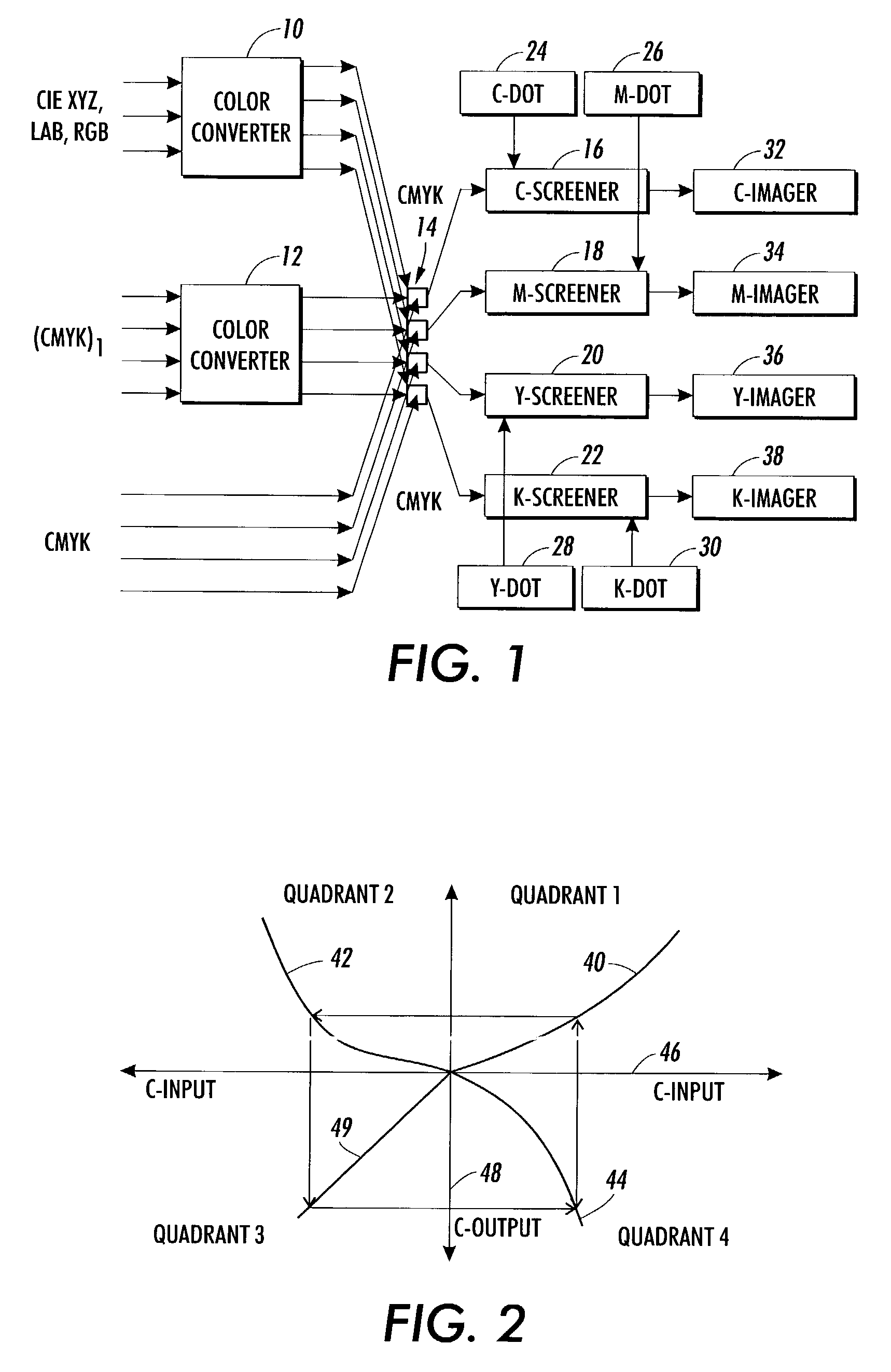Iterative printer control and color balancing system and method using a high quantization resolution halftone array to achieve improved image quality with reduced processing overhead
a printer control and color balancing technology, applied in the direction of colour separation/tonal correction, digital marking record carriers, instruments, etc., can solve the problems of image quality (iq) problems, low color balancing quality, and contouring from calibration and real-time recalibration, so as to reduce printing space and execution time
- Summary
- Abstract
- Description
- Claims
- Application Information
AI Technical Summary
Benefits of technology
Problems solved by technology
Method used
Image
Examples
Embodiment Construction
[0008]It will become evident from the following discussion that embodiments of the present application set forth herein, are suited for use in a wide variety of printing and copying systems, and are not necessarily limited in application to the particular systems illustrated.
[0009]With attention to FIG. 1, depicted is an exemplary image path which may reside wholly or in part within one machine, such as a controller driving a printer or press, and another part may reside in the press or printer itself. Color converters 10 and 12 are used to convert from one color space to another. Such devices can, for instance, be implemented on a computer, using a programming language, and their operation is well known to one of ordinary skill in the art. One description of how this conversion can be accomplished is described in International Color Consortium (ICC) standard specifications. One-dimensional lookup tables 14 are used for calibrating the press or printer. The outputs from color conver...
PUM
 Login to View More
Login to View More Abstract
Description
Claims
Application Information
 Login to View More
Login to View More - R&D
- Intellectual Property
- Life Sciences
- Materials
- Tech Scout
- Unparalleled Data Quality
- Higher Quality Content
- 60% Fewer Hallucinations
Browse by: Latest US Patents, China's latest patents, Technical Efficacy Thesaurus, Application Domain, Technology Topic, Popular Technical Reports.
© 2025 PatSnap. All rights reserved.Legal|Privacy policy|Modern Slavery Act Transparency Statement|Sitemap|About US| Contact US: help@patsnap.com



